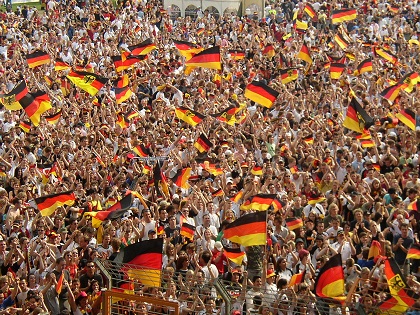The German population has reached a new record. In 2018, the population grew by 227,000 people, or 0.3 percent, as the Federal Statistical Office (Destatis) announced in Wiesbaden. This is the first time in history that over 83 million people live in Germany. The exact figure at the end of the year was given by the Federal Office at 83.0192 million.
The reason is that according to preliminary results Germany had 386,000 more people enter the country than migrate, and at the same time the number of births exceeded the number of deaths by 167,000. However, the growth was lower than in previous years: in 2017 it had amounted to 271,000, compared to 346,000 in the previous year. The proportion of foreigners in the total population increase in 2018 went from 11.7 percent to 12.2 percent. On December 31, 2018, German population consisted of around 72.9 million German nationals and 10.1 million foreign citizens.
German Population
Average population density is about 230 people per square kilometer, but population distribution is very uneven. In the former West Germany, population density is 267 people per square kilometer, compared with 140 people per square kilometer in the former East Germany. Berlin and the industrialized Ruhr Valley are densely populated, while much of the Brandenburg and Mecklenburg-Western Pomerania regions in the East are thinly populated. These disparities have been exacerbated by migration from East to West, as former Easterners have sought better employment opportunities.
About 61 percent of the population lives in towns with 2,000 to 100,000 inhabitants; 30 percent, in cities with more than 100,000 inhabitants; and the remainder, in villages with fewer than 2,000 inhabitants.
Germany’s population includes 7.3 million foreigners, including 2 million Turks and many refugees from the developing world. Many Turks came to Germany as guest workers during the economic boom from the mid-1950s to the end of 1973. Since 1970, about 3.2 million foreigners have become German citizens. With the introduction of a new citizenship law in 2000, many children of foreign parents became eligible for German citizenship for the first time. Between 1988 and 1993, more than 1.4 million refugees, many from the former Soviet Union, sought asylum in Germany, but only 57,000 were granted their wish. Although the right to asylum remains intact for legitimate victims of political persecution, restrictions on the countries of origin and entry introduced in 1993 have steadily reduced the number of those seeking asylum to a 20-year low of 50,500 in 2003.
A new immigration law that took effect on January 1, 2005, promotes a more open immigration policy, particularly for highly skilled workers. The law also extends the right to asylum to the victims of genital mutilation and sexual abuse and political persecution by non-European Union groups. In 2005 Germany’s net migration rate was estimated to be 2.18 migrants per 1,000 people, placing Germany forty-second in the world in inbound migration, the same level experienced by the United Kingdom.
Related articles:
German Society: Traditions, Modernity, and Cultural Identity
Germany’s Best-Kept Secret: The Culture and Traditions of the Sorbs
Immigration In Germany
Foreigners In Germany
Ethnic Germans
Asylum-Seekers In Germany
Structure of German Society

